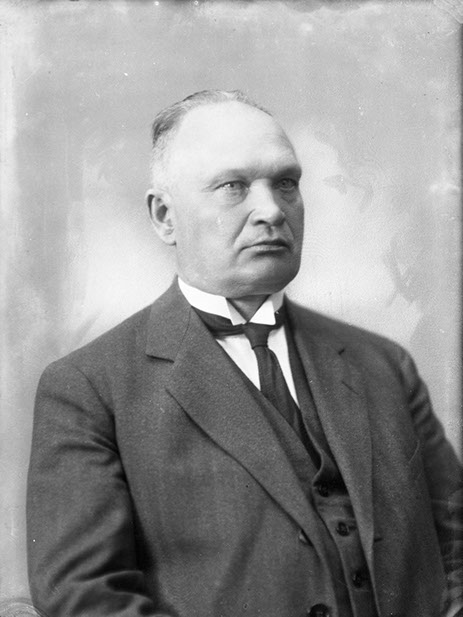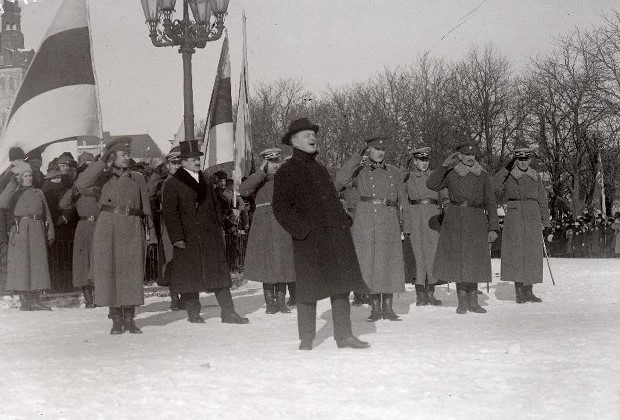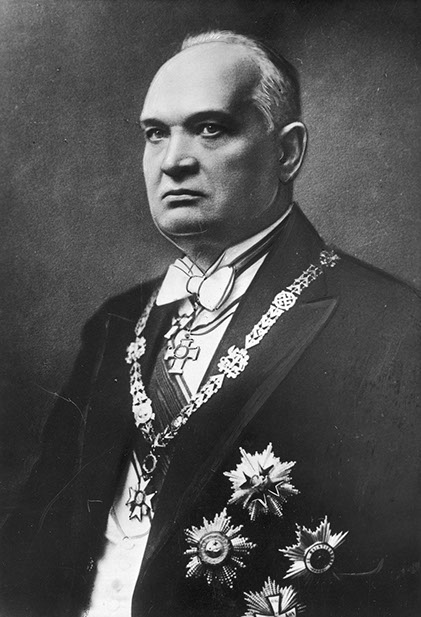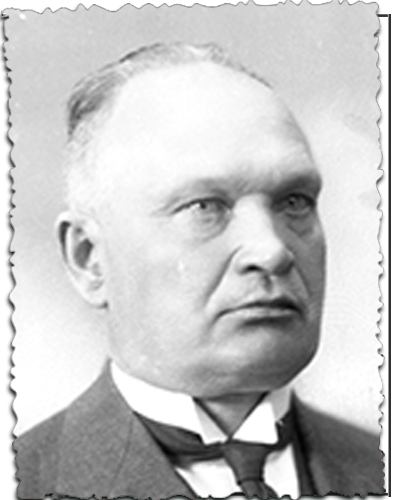



PERSONALITIES
1874–1956
PÄTS
KONSTANTIN
Prime Minister of Estonia

Konstantin Päts was born in the Governorate of Livonia into a family of a landowner, an Orthodox Estonian. He graduated from the Law Faculty of Yuryev University (1898). After graduation, he served in the 7th company of the 96th Omsk Infantry Regiment, in January 1900, he was transferred to the reserve with the promotion of ensign. In 1900, he was an assistant lawyer in Revel [currently Tallinn], in 1904–1905, he was a city councilor, deputy mayor. He took part in the revolution of 1905, he was court-martialed and sentenced to death in absentia for publishing the appeal of the Petersburg Soviet of Workers’ Deputies. Since 1906, he lived in emigration in Switzerland. After the revocation of his sentence, Päts returned to Russia (1909), and was sentenced to a year in prison. He served a 9-month prison sentence for organizing the Congress of Estonian Communities in 1910–1911. In 1911–1916, Päts was the editor of the Tallinna Teataja [Tallinn newspaper] newspaper. In 1916, he was drafted into the army.
After the February Revolution of 1917, he led the Tallinn city militia, was the Chairman of the Supreme Committee of Estonian military personnel and contributed to the formation of Estonian national units. In March 1917, he was elected Chief of Police in Tallinn, member and Chairman of the Supreme Committee of Estonian Soldiers. In 1917–1919, Päts was a leader of the Provisional Zemsky [local] Council of the Governorate of Estonia. After the October coup, he was arrested by the Bolsheviks three times. After his release in February 1918, he joined the Rescue Committee, established by the Zemsky Council, which acted underground. In the context of Soviet troops’ withdrawal and the approach of German troops, the Committee declared Estonia an independent republic (February 24, 1918) and formed a Provisional Government headed by Päts. In accordance with the Treaty of Brest-Litovsk, Estonia was occupied by Germany, which did not recognize Estonian independence. Päts was arrested (July–November 1918).

After the revolution in Germany (November 1918) he was released and again headed the Provisional Government of Estonia (until May 1919). From November 1918 to January 1919, with the help of the British navy, Finnish, and Russian White volunteers, this government managed to retain power in the struggle against the Commune of the Working People of Estonia proclaimed in Narva, headed by Jaan Anvelt.
His subsequent career included the following posts in the Constituent Assembly: in 1919–1920, a deputy from the Land Union, which he used as a basis in creating the Agrarian Party (Assembly of Agrarians) (1920), a member of all five convocations of the National Assembly (Chairman in 1922–1923). State Elder (Prime Minister) of Estonia in 1921–1922, 1923–1924, 1931–1932, 1932–1933, 1933–1934. Prime Minister with powers of the Head of state (1934–1937), State Regent (1937–1938), President of Estonia (1938–1940). According to some data, in the 1930s, Päts collaborated with Soviet intelligence.
After the annexation of Estonia to the USSR in the summer of 1940, he was arrested by the Soviet authorities and exiled to Ufa. In 1942, he was placed in the Kazan prison psychiatric hospital. He died in a psychiatric clinic in the village of Burashevo, Kalinin region. In 1990, his remains were reburied in Tallinn Metsakalmistu cemetery.

Konstantin Päts. 1920s.


Prime Minister and Minister of War Konstantin Päts delivering a speech at the parade on the occasion of the 1st anniversary of the proclamation of the Republic of Estonia. Tallinn. 1919.


Konstantin Päts. 1930s.






© 2021 The State Museum of Political History of Russia. All rights reserved. See Website Terms of Use on About Project page


